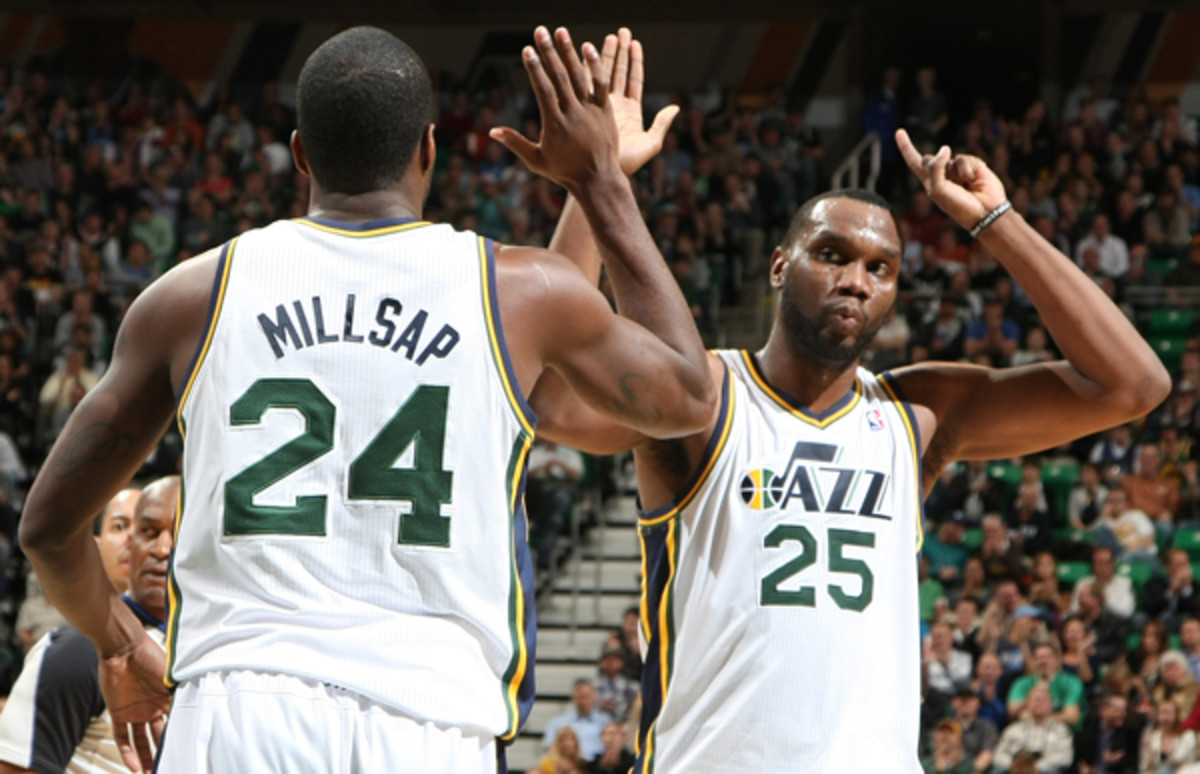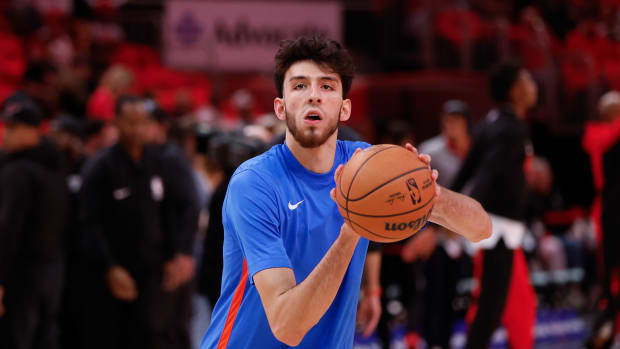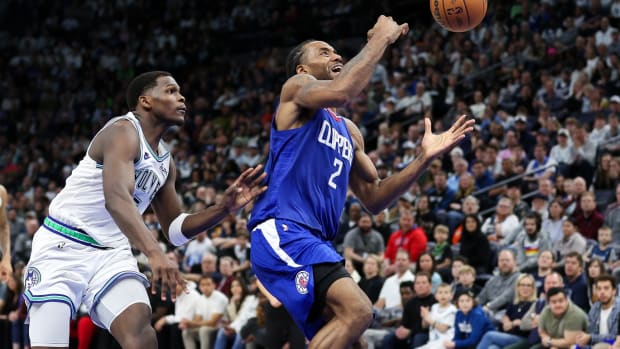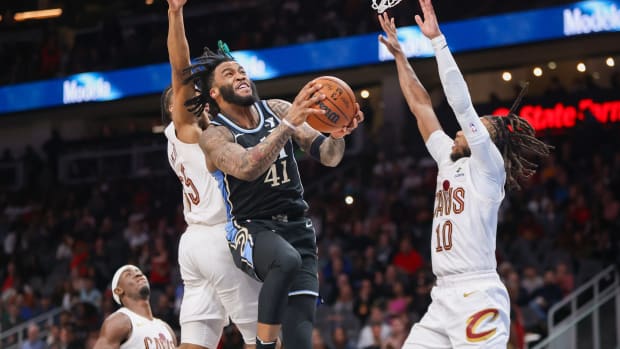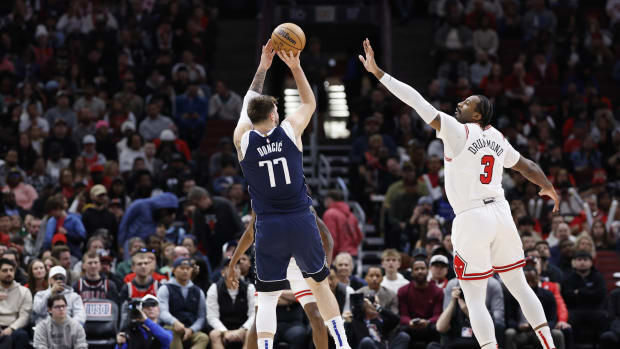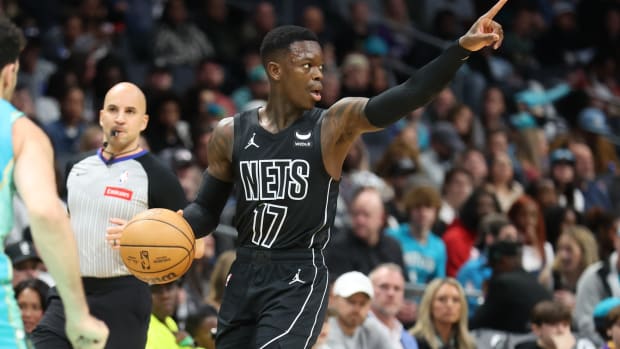Offseason Grades: Utah Jazz
Both Paul Millsap (left) and Al Jefferson left the Jazz during the summer free agency period. (Melissa Majchrzak/Getty Images)
The Point Forward will grade every team’s offseason over the next few weeks. Click here for the complete archive.
Additions: Trey Burke (No. 9 pick in 2013 draft), Rudy Gobert (No. 27), Brandon Rush, Richard Jefferson, Andris Biederins, John Lucas III, Ian Clark
Losses: Al Jefferson, Paul Millsap, Mo Williams, Randy Foye, DeMarre Carroll, Earl Watson, Kevin Murphy
Other Moves: Drafted Raul Neto (No. 47; expected to play overseas)
What Went Right: Depending on how you look at it, the Jazz either procrastinated or exercised patience over the last two years, hovering in the middle of the Western Conference standings and holding steadfast against the trade rumors that circled around their roster's two biggest names, Al Jefferson and Paul Millsap. Whether you bemoan the potential for missed opportunities or credit the Jazz's restraint, this summer's total housecleaning was years in the making.
Once Jerry Sloan resigned and Deron Williams -- the face of a franchise that had advanced in the playoffs in three of the previous four seasons -- was traded to the Nets in February 2010, this day, or something like it, was inevitable. Why? Because Utah's two leading scorers were firmly stuck in the "good but not great" category, established veterans capable of winning their position battles regularly and garnering interest from true contenders, but not quite talented enough to carry a team to postseason glory in the West without the guidance of a true superstar. Summer after summer, deadline after deadline, Jefferson and Millsap were floated as rumored trade targets, talk that increased as the Jazz (very) gradually worked youngsters Derrick Favors and Enes Kanter into (slightly) larger roles last season. Still, Utah never consummated a deal for either player, and Jefferson and Millsap walked to the Bobcats and Hawks, respectively, when they became unrestricted free agents this summer. The Jazz's total return for Jefferson, who averaged 17.8 points and 9.2 rebounds, and Millsap, who added 14.6 points and 7.1 rebounds? Nothing. Nada. Zip.
There were, however, three indirect benefits to letting both leave. One: Favors and Kanter now get all the minutes they can handle. Two: Utah maximized its cap flexibility, in 2013-14 and beyond, by not taking back any money in a trade (at least year's deadline) or a sign-and-trade this summer. Three: Losing two of this summer's marquee free agents without compensation, and without using their money to target replacements immediately, ensured that the Jazz will struggle to crack the top-11 in the West next year, meaning they should be in line for a plumb pick in the loaded 2014 draft.
Those strategic benefits were reinforced by all of the Jazz's other moves. Letting Mo Williams, Randy Foye, DeMarre Carroll and Earl Watson all leave -- even though none commanded significant money on the open market -- made for a total clearing of the decks for Utah's new-look young core. What remains is a talented and balanced quintet made up of Favors, Kanter, Gordon Hayward, Alec Burks and 2013 lottery pick Trey Burke. All five players are 23 or younger, and all five are surely licking their lips at the vast opportunities handed to them for next season. Williams, Foye and Carroll all signed multi-year contracts this summer, so their departures again make for maximum cap flexibility for the Jazz heading into next summer. That all three left without a single proven replacement entering the picture ensures that a lack of depth will keep Utah from challenging for mediocrity, even if one or two of the young centerpieces enjoy breakout seasons.
Once Utah finally took the plunge on the rebuild that has been on the horizon for years, they did so without half-stepping.
What Went Wrong: The clear-out nature of this summer, by definition, kept the Jazz from making any regrettable financial decisions. What could go wrong when the Jazz didn't take on or give out a single contract -- excluding their first-round picks, of course -- that included guaranteed money past this upcoming season? With no major whiffs to discuss, all that's really left is nit-picking.
The Jazz got in on an increasingly popular move for teams in transition when they sold off a huge chunk of their cap space to the Warriors, who sought help to complete a sign-and-trade with the Nuggets for Andre Iguodala. In the deal, Utah acquired Brandon Rush and absorbed the expiring contracts of Richard Jefferson ($11 million) and Andris Biedrins ($9 million) while netting a total of two first-round picks (2014 and 2017) and three second-round picks (2016, 2017, 2018) for taking on all that bad money.
There wasn't anything truly terrible about this trade from the Jazz's perspective, but it wasn't a home run. As noted when the trade first went down, the overlooked addition of Rush, who is coming off of a season lost to a knee injury, could prove fruitful. Rush should enjoy a major role, giving Utah the chance to evaluate him fully during the last season of his contract. The heart of this deal was the collection of picks, though, and there the Jazz failed to land a top-shelf asset despite taking on $20 million worth of deadweight. Golden State's 2014 pick figures to be in the 20s, and the rest of the picks are too far off to project accurately, although the state of the Warriors' up-and-coming roster offers reason to believe their 2017 pick won't be all that much to write home about either. It's worth pointing out that Utah did need Jefferson and Biedrins to climb above the league's $52.8 million salary cap floor, so most of that money was going to be spent one way or another. Still, the feeling is that the Jazz could have done better for agreeing to trade for two contracts that were viewed as practically untradeable.
The low moment of Utah's summer, as silly as it might sound, was probably Burke's performance in the Orlando Summer League, where he averaged 8.8 points and four assists while shooting just 24.1 percent in four games. Burke, 20, has been listed among the top 2014 Rookie of the Year contenders, and Jazz fans were surely hoping that he would take the summer circuit by storm, a la 2013 Rookie of the Year Damian Lillard. That didn't happen. Whether his tough week winds up carrying any real meaning remains to be seen.
Grade: B. So where do the Jazz find themselves now? Burke firmly holds the car keys and has a cast to work and grow with. Rudy Gobert, a 2013 first-round pick who boasts off-the-charts measurements, makes for an intriguing project. Favors and Kanter have finally been freed. Flexibility has been maximized: Utah has $31-million-plus worth of expiring contracts this year, meaning they will enter next summer with the freedom to be active and aggressive. The future has been set up cleanly: The Jazz have only rookie contracts and pittance deals on their 2014-15 books, giving them the necessary cap space to grant potentially expensive rookie extensions to their core players over the next few seasons. Finally, assets are in hand: Utah holds two 2014 first-round picks, including one with the chance to land a franchise-changing talent, and possesses a number of new minor assets that could come in handy down the road.






























